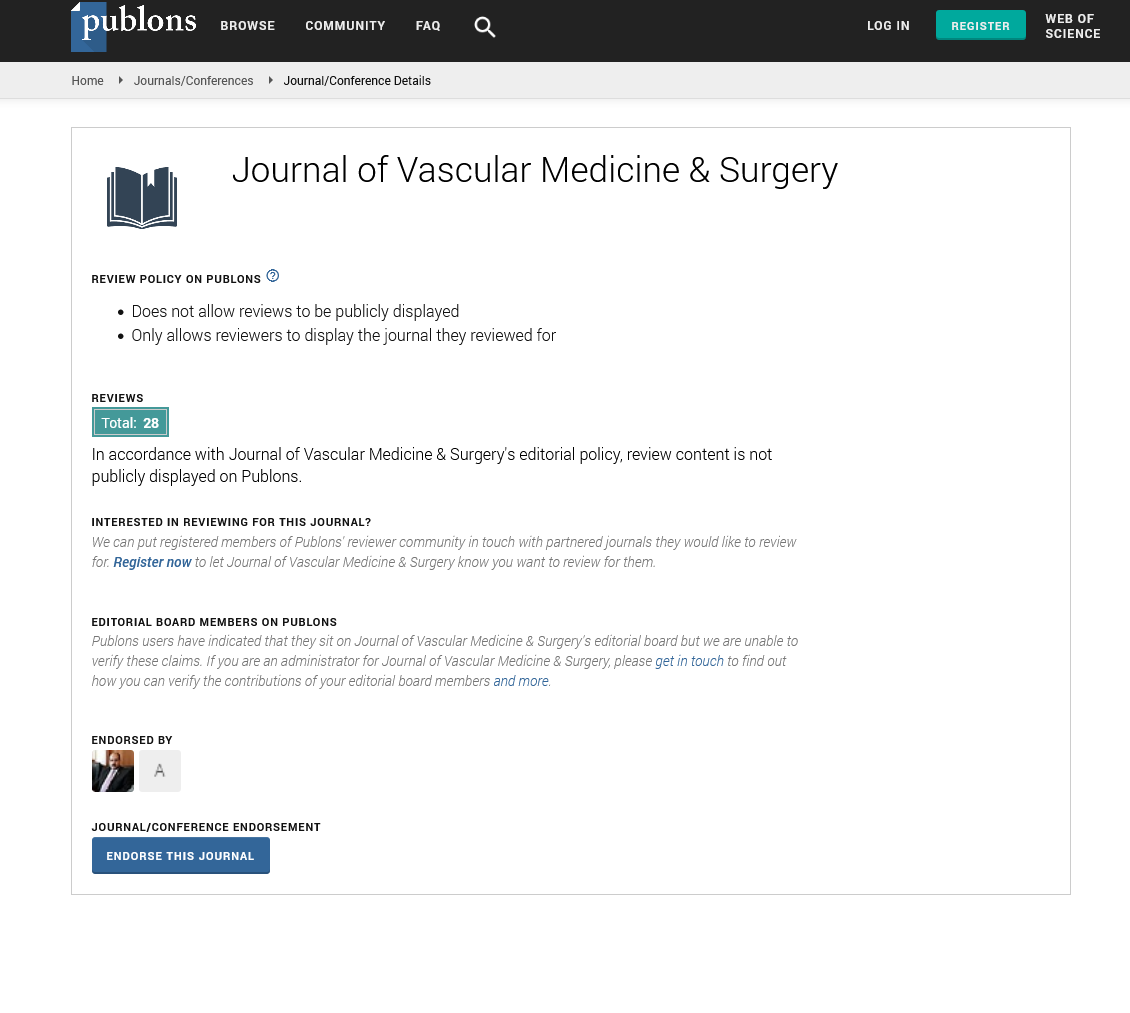Indexed In
- Open J Gate
- Academic Keys
- RefSeek
- Hamdard University
- EBSCO A-Z
- OCLC- WorldCat
- Publons
- Euro Pub
- Google Scholar
- SHERPA ROMEO
Useful Links
Share This Page
Journal Flyer

Open Access Journals
- Agri and Aquaculture
- Biochemistry
- Bioinformatics & Systems Biology
- Business & Management
- Chemistry
- Clinical Sciences
- Engineering
- Food & Nutrition
- General Science
- Genetics & Molecular Biology
- Immunology & Microbiology
- Medical Sciences
- Neuroscience & Psychology
- Nursing & Health Care
- Pharmaceutical Sciences
Commentary - (2025) Volume 13, Issue 6
Title: Managing the Double Burden: Why COPD and CHF Must Be Treated as Interacting, Not Isolated, Conditions
Martin Willi*Received: 20-May-2025, Manuscript No. JVMS-25- 29213; Editor assigned: 22-May-2025, Pre QC No. JVMS-25- 29213(PQ); Reviewed: 05-Jun-2025, QC No. JVMS-25- 29213; Revised: 12-Jun-2025, Manuscript No. JVMS-25- 29213(R); Published: 19-Jun-2025, DOI: 10.35248/2329-6925.25.13.602
Description
In today’s clinical environment, Chronic Obstructive Pulmonary Disease (COPD) and Chronic Heart Failure (CHF) are still too often managed in silos. Despite sharing similar symptom profiles—most notably breathlessness, fatigue and fluid retention—treatment protocols and diagnostic pathways for these conditions remain distinct. However, the growing body of research, including recent intensive longitudinal data, shows that this separation may be clinically shortsighted. When both diseases coexist, as they frequently do in older adults, the deterioration of one often triggers or exacerbates the other. New insights from patient-reported daily symptom diaries over the course of a year reveal a complex, bidirectional interplay between COPD and CHF. On a group level, a worsening in CHF symptoms (such as swelling, weight gain, or nocturnal dyspnea) was statistically linked with increased COPD symptoms the following day. Similarly, COPD flares—especially those involving increased breathlessness or sputum changes—frequently preceded worsening CHF symptoms.
This is not merely a curiosity of comorbidity; it is a call to action for integrated care. A single flare-up in one condition can accelerate the other; treating each disease in isolation may not just be ineffective—it could be harmful. Consider a patient presenting with worsening breathlessness. If clinicians fail to assess both cardiac and pulmonary status, they risk missing an acute heart failure episode triggered by respiratory decline or vice versa. The patient, meanwhile, is left vulnerable to a cascade of worsening health.
What is even more revealing is the individual-level variability. While the study confirmed a general trend across the group, not all patients exhibited the same directional relationship between COPD and CHF symptoms. For some, CHF symptoms strongly predicted COPD flares. For others, respiratory decline preceded cardiac decompensation. In some cases, no significant pattern emerged at all. This highlights a critical truth: population-level insights are useful, but chronic disease management must ultimately be personalized. Each patient’s comorbidity profile is unique and should be treated accordingly.
Enhancing care through symptom diaries and digital monitoring
Symptom diaries offer a promising solution for capturing this nuance. Daily tracking enables both patients and providers to recognize patterns and triggers that would likely be missed in routine clinical visits. Moreover, advances in digital health can scale this personalized monitoring. Smart devices that track weight, oxygen saturation and physical activity could serve as early-warning systems. With appropriate data-sharing systems in place, clinicians could receive alerts when a patient’s data suggests the beginning of a deterioration spiral, enabling proactive rather than reactive care.
Personalized care, however, does not stop at monitoring. Treatment plans must evolve based on each patient’s specific interactions between diseases. If a patient consistently experiences CHF symptoms after a respiratory event, early cardiac intervention may be warranted during COPD flare-ups. Conversely, for patients whose lung function worsens after fluid overload, aggressive respiratory therapy might be the priority. The key lies in recognizing these patterns and adapting care dynamically—not rigidly following disease-specific protocols.
Conclusion
This research does more than identify a bidirectional relationship between COPD and CHF; it exposes a systemic failure in how multimorbid patients are managed. Our current healthcare model, with its compartmentalized specialties and narrow treatment algorithms, is ill-equipped to address the fluid interactions between chronic conditions. COPD and CHF do not operate in isolation within the body and our clinical approach should reflect this interconnectedness. A paradigm shift is needed toward integrated, dynamic and patient-centered care for comorbid chronic conditions. This includes breaking down silos between pulmonary and cardiac specialties, investing in real-time personalized monitoring and leveraging patient participation through symptom tracking. Clinicians must be trained to recognize overlapping symptoms and the mechanisms that drive disease interaction. Policymakers and insurers must support interdisciplinary care teams and platforms that allow for continuous data flow and coordinated response.
In an age of increasing multimorbidity, interconnected thinking is no longer optional it is essential. The future of chronic disease care depends on recognizing and treating interactions, not just individual illnesses. By listening to the daily rhythms of patients and tailoring care accordingly, we can break the cycle of exacerbation and restore stability, resilience and quality of life.
Citation: Willi M (2025). The Interconnected Battle: COPD and CHF Management. . J Vasc Surg. 13: 602
Copyright: © 2025 Willi M. This is an open-access article distributed under the terms of the Creative Commons Attribution License, which permits unrestricted use, distribution and reproduction in any medium, provided the original author and source are credited.

